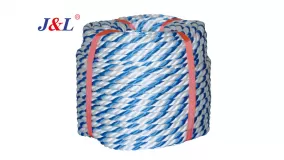What is the purpose of the mooring rope?
Mooring ropes, also known as dock lines or mooring lines, are essential components used in maritime operations to secure vessels to docks, piers, or other fixed structures. These robust ropes play a crucial role in ensuring the safety, stability, and maneuverability of ships and boats while they are berthed or anchored.
Securing Vessels:
The primary purpose of mooring ropes is to secure vessels to docks, quays, or buoys, preventing them from drifting or moving away from the designated berth or anchorage.
Mooring ropes are attached to bollards, cleats, or mooring points on the vessel and anchored firmly to the shore or fixed structures, providing a reliable connection between the vessel and the shore.
Ensuring Stability:
Mooring ropes help maintain the stability of vessels by minimizing their movement caused by tidal currents, wind, or waves.
By keeping the vessel securely in place, mooring ropes prevent excessive rocking, swaying, or drifting, ensuring a safe and stable environment for crew members and cargo.
Absorbing Forces:
Related links:
Pruning shearsMooring ropes are designed to absorb and distribute the forces exerted on a vessel during berthing, loading, or unloading operations.
They act as shock absorbers, dampening the impact of sudden movements or changes in environmental conditions, such as strong winds or tidal surges.
Facilitating Maneuverability:
Mooring ropes play a crucial role in facilitating the maneuverability of vessels during berthing and departure procedures.
Properly secured mooring ropes allow vessels to be guided smoothly into position alongside docks or piers and assist in controlling their movements during docking and undocking maneuvers.
Ensuring Safety:
Mooring ropes are essential for ensuring the safety of vessels, crew members, and port facilities.
Securely moored vessels are less susceptible to accidents, collisions, or damage caused by drifting or uncontrolled movement, reducing the risk of maritime incidents.




